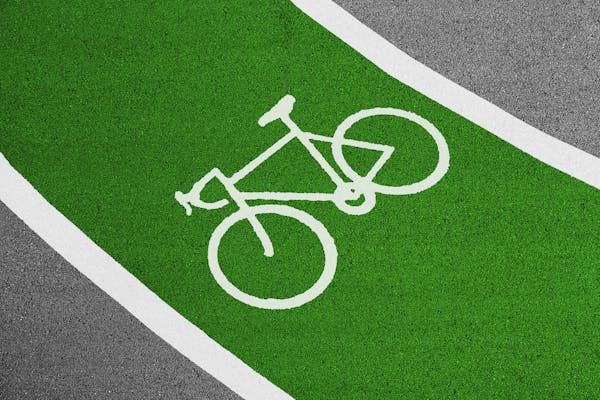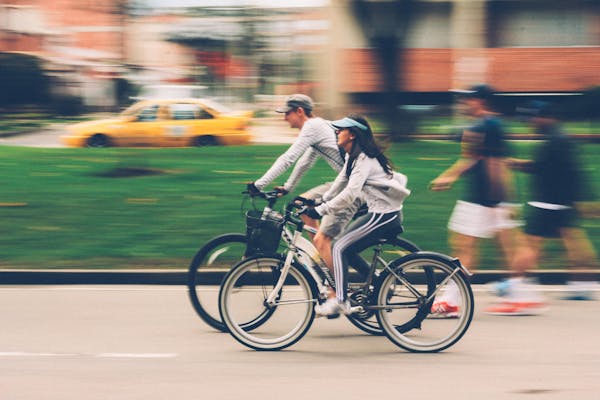Bicycle Safety: Essential Tips to Keep You Safe on the Roads
Whether you are a daily bike commuter or a weekend cyclist, staying safe while riding is crucial. This comprehensive guide covers vital safety practices that every cyclist should know and follow. From basic equipment checks to advanced road awareness, these tips will help you stay protected during your rides.

Essential Safety Equipment
Your safety gear is your first line of defense on the road. Start with a properly fitted helmet — it should sit level on your head and not tilt backward or forward. The straps should form a V shape under your ears, and the chin strap should be snug but allow you to open your mouth comfortably.Not only does wearing a helmet reduce the risk of head injury in bike accidents, but the lack of one can lead to reduced compensation. As attorneys from the Bicycle Accident Lawyers Group note, some states follow a comparative negligence approach for such accidents. This means that if you don’t wear a helmet when an accident happens, insurance companies could use this fact to reduce your settlement.
Also, high-visibility clothing makes a significant difference in your safety. Wear bright colors during the day and reflective gear at night. Consider these key items:
- A reflective vest or jacket with multiple reflective strips across the chest and back
- Ankle bands with reflective strips that create attention-grabbing motion
- Light-colored or fluorescent clothing that stands out against urban backgrounds
- Bike lights for both front and rear, with backup batteries for longer rides.
Your bike needs proper safety equipment too:
- A white front light visible from 500 feet, with steady and flashing modes
- A red rear light or reflector (preferably both)
- Side reflectors on your wheels to increase visibility from all angles
- A bell or horn to alert others of your presence
- Working brakes on both wheels, properly adjusted for maximum stopping power.
- Check your tire pressure — under-inflated tires make steering difficult and increase the risk of flats. Most road bike tires need between 80-120 PSI, while mountain bikes typically require 25-35 PSI. Look for cuts or embedded objects in the tire treads.
- Test your brakes by squeezing the levers — they should stop the wheels firmly without touching the handlebars.
- Verify that your chain runs smoothly and is properly lubricated. A dry or rusty chain can skip or break suddenly, potentially causing serious accidents.
- Make sure all bolts and quick-release levers are tight, especially on your wheels and seat post.
- Give your bike a quick lift and drop test — listen for any unusual rattles that might indicate loose parts.
- A white front light visible from 500 feet, with steady and flashing modes
- A red rear light or reflector (preferably both)
- Side reflectors on your wheels to increase visibility from all angles
- A bell or horn to alert others of your presence
- Working brakes on both wheels, properly adjusted for maximum stopping power.
Pre-Ride Bike Check
Before every ride, take five minutes to inspect your bicycle. This quick check can prevent accidents caused by mechanical issues.- Check your tire pressure — under-inflated tires make steering difficult and increase the risk of flats. Most road bike tires need between 80-120 PSI, while mountain bikes typically require 25-35 PSI. Look for cuts or embedded objects in the tire treads.
- Test your brakes by squeezing the levers — they should stop the wheels firmly without touching the handlebars.
- Verify that your chain runs smoothly and is properly lubricated. A dry or rusty chain can skip or break suddenly, potentially causing serious accidents.
- Make sure all bolts and quick-release levers are tight, especially on your wheels and seat post.
- Give your bike a quick lift and drop test — listen for any unusual rattles that might indicate loose parts.
Road Rules and Rights
Cyclists have the same rights and responsibilities as drivers. Understanding and following traffic laws keeps everyone safer and helps create a more predictable road environment for all users.Always ride in the same direction as traffic. Take your place in the lane — riding too close to the curb can force you into dangerous situations and limit your visibility to drivers. Signal your turns and stops clearly and early, ideally about 100 feet before your intended action. Use hand signals that drivers can understand: left arm straight out for left turns, right arm straight out for right turns, and left arm bent down for stops.
Stop at red lights and stop signs just like cars do. Don't weave between parked cars — maintain a predictable straight line that helps drivers anticipate your movements. Watch for opening car doors by staying at least three feet away from parked vehicles. This “door zone” is one of the most common areas for cycling accidents.

Advanced Road Awareness
Developing strong road awareness helps you anticipate and avoid dangerous situations. This skill comes with practice and conscious attention to your surroundings.Monitor the road surface ahead for hazards like potholes, drain grates, and debris. Scan about 20-30 feet ahead while also staying aware of your immediate surroundings. In wet conditions, painted road markings and metal surfaces become especially slippery — cross them as perpendicularly as possible. Cross railroad tracks at a right angle to prevent your wheels from getting caught in the gaps.
Watch for vehicles turning right at intersections — they might not check their blind spots for cyclists. Make eye contact with drivers whenever possible to ensure they've seen you. Be extra cautious around large vehicles, which have bigger blind spots and wider turning radiuses. When passing parked cars, watch for telltale signs of occupants about to exit, such as brake lights, exhaust, or movement inside the vehicle.
Night Riding Safety
Riding after dark requires additional precautions. Beyond the legally required lights and reflectors, consider these enhanced safety measures for low-light conditions:- Choose routes with street lighting when possible, and familiarize yourself with them during daylight hours first.
- Wear multiple reflective items to increase your visibility from all angles — drivers need to see you from the front, sides, and rear.
- Consider adding spoke lights or reflective tire strips to create moving light patterns that catch drivers' attention through the biological motion effect.
- Reduce your speed at night since you can't see road hazards as easily. Your bike lights will create shadows that can make it harder to judge surface conditions.
Weather Considerations
Each type of weather presents unique challenges that require specific precautions.In wet weather:
- Reduce your speed and increase following distances to account for longer stopping times.- Brake earlier and more gradually to prevent skidding on slick surfaces.
- Avoid puddles that might hide potholes or other road hazards.
- Use fenders to improve visibility behind you and keep road spray off your clothes.
- Take corners more slowly and avoid leaning as much as you would in dry conditions.
- Wear gloves that allow proper grip on the controls while keeping your hands warm.
- Watch for ice, especially in shaded areas and on bridges.
- Consider wider tires for better traction in challenging conditions.
- Keep moving when possible to maintain body heat.
- Maintain consistent spacing between riders — typically about two bike lengths in good conditions.
- Don't overlap wheels with the cyclist ahead of you, as sudden moves could cause a chain reaction crash.
- Call out hazards to riders behind you using clear, agreed-upon signals.
- Pass other cyclists on the left, announcing your intention first with a clear “On your left” call.
In cold weather:
- Dress in layers that you can adjust as needed during your ride.- Wear gloves that allow proper grip on the controls while keeping your hands warm.
- Watch for ice, especially in shaded areas and on bridges.
- Consider wider tires for better traction in challenging conditions.
- Keep moving when possible to maintain body heat.
Group Riding Guidelines
When riding with others, additional safety practices come into play to protect everyone in the group.- Maintain consistent spacing between riders — typically about two bike lengths in good conditions.
- Don't overlap wheels with the cyclist ahead of you, as sudden moves could cause a chain reaction crash.
- Call out hazards to riders behind you using clear, agreed-upon signals.
- Pass other cyclists on the left, announcing your intention first with a clear “On your left” call.
Legal Considerations and Documentation
Understanding your legal rights and responsibilities helps protect you both on the road and after any incidents. This knowledge is especially important if you're involved in an accident.Document any accidents thoroughly, even if they seem minor at first. Take photos of the scene, your bike, and any vehicles involved. Get contact information from witnesses and involved parties. File police reports for any collision involving vehicles, as this creates an official record of the incident. Keep records of your safety equipment and maintenance schedule to demonstrate your commitment to safe cycling.
Know your local cycling laws and regulations. Many areas have specific requirements about where you can ride, what equipment you must use, and how to interact with other traffic. Some regions require specific reflector colors or mandate the use of bike lanes when available.
To sum up, remember that safety is an active practice — it requires constant attention and regular updates to your knowledge and skills. Stay alert, stay visible, and enjoy your rides with confidence in your safety preparations.
Do You Need An Attorney?
If so, post a short summary of your legal needs to our site and let attorneys submit applications to fulfill those needs. No time wasted, no hassle, no confusion, no cost.

